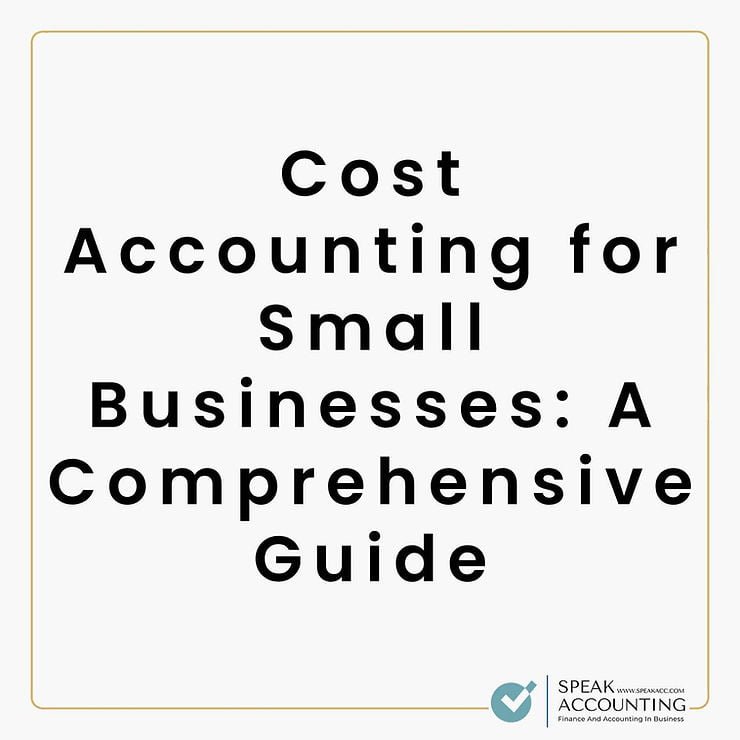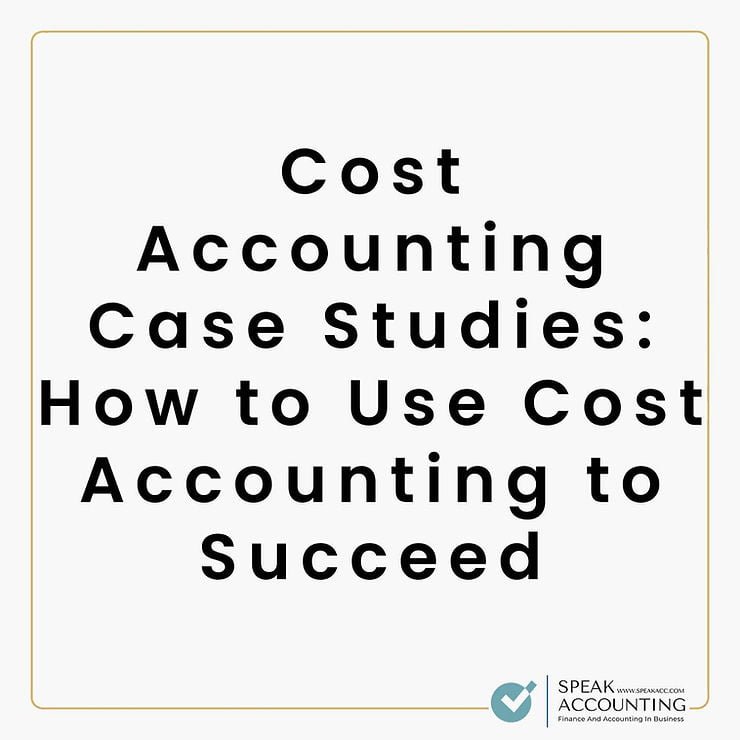Introduction to Cost Accounting for Manufacturing Companies
Cost accounting, the clandestine ally of prosperous manufacturing enterprises, plays a pivotal role in shaping financial destinies. Picture this: “Cost accounting is the secret weapon of successful manufacturing companies.” In a realm where precision and efficiency reign supreme, this unassuming hero holds the key to unlocking financial prosperity.
Did you know that companies leveraging robust cost accounting practices are 30% more likely to outperform their competitors? This isn’t just a statistic; it’s a testament to the transformative power of cost accounting. Join us on a journey where numbers tell stories and financial landscapes transform.
Importance of Cost Accounting in Manufacturing Companies
In the dynamic landscape of manufacturing, where decisions shape destinies, cost accounting emerges as the guiding light, transcending mere numbers. Let’s delve deeper into the tangible impact it can have on decision-making and operational efficiency.
Consider a manufacturing arena where two companies are vying for supremacy. Company A, armed with cost accounting insights, takes a methodical approach. It not only survives the competitive tides but emerges as an industry leader. Here’s how cost accounting fuels this success:
Specific Examples of Cost Accounting in Action:
Determining Profitable Products and Services:
Cost accounting allows companies to dissect costs associated with each product or service. By analyzing profitability metrics, businesses can focus on offerings that contribute most to the bottom line.
Setting Profitable Prices:
Armed with cost data, companies can set prices that not only cover expenses but ensure profitability. This strategic pricing approach not only attracts customers but also safeguards financial health.
Identifying and Eliminating Waste:
Cost accounting unveils inefficiencies and waste within the production process. A real-world example could be a manufacturing company that, through cost accounting, identified redundant processes and streamlined operations, reducing waste and costs.
Improving Resource Productivity:
By analyzing costs associated with resource allocation, companies can optimize production processes. For instance, understanding labor costs per unit enables better resource utilization and improved overall productivity.
Informed Decisions about Capital Investments:
Cost accounting isn’t just about day-to-day operations; it guides long-term strategic decisions. Imagine a manufacturing company considering a significant capital investment. Cost accounting provides insights into potential returns, ensuring informed decision-making.
Real-World Success Stories:
Consider Company B, a manufacturing entity facing financial challenges. Through strategic implementation of cost accounting, it identified areas of cost reduction. By cutting unnecessary expenses and optimizing operations, Company B not only improved profitability but also expanded its market share.
In essence, the power of cost accounting lies not just in theory but in its practical application. It’s the difference between surviving and thriving in the competitive manufacturing landscape, a tool that empowers businesses to not only make decisions that matter but to emerge as industry leaders.
Benefits of Implementing Effective Cost Accounting Practices
Imagine a manufacturing company as a complex machine with countless moving parts. Effective cost accounting is the lubricant that ensures each component operates seamlessly. It’s not just about improving financial health; it’s about achieving operational excellence.
Specific cost accounting practices, such as activity-based costing or target costing, can be the catalysts for transformative change. For example, implementing activity-based costing can reveal hidden inefficiencies, enabling companies to reallocate resources effectively. The benefits go beyond numbers—they resonate in the operational heartbeat of a company.
Understanding Cost Concepts in Manufacturing
Direct Costs
Let’s take a closer look at the essence of manufacturing costs. Direct costs, akin to the architects of a product’s financial DNA, are the tangible elements intricately tied to a specific product or cost object. Picture the creation of a wooden table—the direct costs include the wood, labor for crafting the table, and any materials specifically used in its construction.
To offer a clearer visualization, envision a diagram where each arrow symbolizes the direct contribution of these costs to the final product. This distinction ensures that direct costs can be precisely traced to the creation of a particular item, providing transparency in financial analysis.
Indirect Costs
On the flip side, indirect costs are the subtle orchestrators influencing the entire manufacturing landscape. Unlike direct costs, these expenses cannot be directly traced to a specific product or cost object. For instance, when manufacturing a wooden table, indirect costs encompass the broader operational expenses of the factory—rent, utilities, and even the salary of the factory manager.
To illustrate this intricate web of costs, imagine a table that serves as a visual guide, mapping out the allocation of indirect costs. This allocation is a crucial step in the cost accounting process, ensuring that these indirect expenses are distributed fairly across products.
Additionally, it’s essential to note that indirect costs are typically allocated to products through various methods. Whether it’s absorption costing, where costs are absorbed into the product based on production volume, or activity-based costing, which assigns costs based on the actual activities consuming resources, these methods add a layer of precision to the allocation process.
In summary, direct and indirect costs form the backbone of cost accounting in manufacturing. By understanding their distinctions and allocation methodologies, businesses can not only grasp the financial intricacies of production but also enhance decision-making processes and operational efficiency. This knowledge serves as a powerful tool for companies navigating the complex landscape of manufacturing costs.
Cost Accounting Systems for Manufacturing Companies
In the realm of cost accounting systems, two titans, job order costing and process costing, take center stage. Let’s explore their nuances and practical applications.
Introduction
Job order costing and process costing stand as the pillars of cost accounting systems for manufacturing companies. These systems provide the framework for tracking and allocating costs, each tailored to specific production scenarios.
Job Order Costing
In the intricate tapestry of cost accounting, job order costing is the bespoke tailor crafting financial suits for unique projects. Industries that thrive on customization, such as construction, shipbuilding, and custom manufacturing, find solace in the precision that job order costing offers.
Here’s a visual aid—a diagram distinguishing job order costing from process costing. Imagine it as a beacon, guiding manufacturing companies to choose the system aligning seamlessly with their production nuances.
Advantages and Disadvantages:
While job order costing excels in providing precision for customized products, it’s crucial to acknowledge its nuances:
| Feature | Job Order Costing |
| Type of Production | Customized |
| Cost Accounting | Tracks costs for individual jobs |
| Cost Allocation | Direct costs allocated to individual jobs |
| Cost Reporting | Provides detailed cost information for individual jobs |
Process Costing
On the flip side, process costing takes the helm as the grand conductor overseeing mass production symphonies. Industries where mass production is the norm, such as food and beverage, chemicals, and pharmaceuticals, find the orchestration of process costing essential.
As a visual guide, consider a table outlining the advantages and disadvantages of process costing. This serves as a compass, aiding manufacturing companies in navigating the labyrinth of production decisions.
Advantages and Disadvantages:
| Feature | Process Costing |
| Type of Production | Mass-produced |
| Cost Accounting | Tracks cost for entire production processes |
| Cost Allocation | Direct and indirect costs averaged across all units produced |
| Cost Reporting | Provides aggregate cost information for entire processes |
In the intricate dance of manufacturing costs, job order costing and process costing are partners, each excelling in its domain. Understanding their distinct features is not just a matter of choice; it’s a strategic decision that shapes how costs are tracked, allocated, and reported in the manufacturing symphony. Armed with this knowledge, companies can tailor their cost accounting systems to orchestrate financial harmony in their unique production landscapes.
Cost Analysis and Reporting in Manufacturing
Cost Variance Analysis
Let’s embark on a journey into the world of cost analysis, where detective work takes the form of cost variance analysis. In essence, cost variance analysis is the process of comparing actual costs to budgeted or standard costs. It serves as a magnifying glass, unveiling the nuanced differences between what was expected and the reality of incurred costs.
Consider a real-world scenario: a manufacturing company identifies a material cost variance. This variance could stem from various factors, such as a spike in raw material prices or a dip in production process efficiency. By donning the detective’s hat and investigating the root cause, the company not only reveals the culprit but also gains insights to implement corrective measures.
Example of Cost Variance Analysis:
Imagine a company experiencing a material cost variance due to increased raw material prices. Through detailed analysis, it discovers the price hike’s impact on overall costs. Armed with this knowledge, the company can strategize ways to negotiate with suppliers, seek alternative materials, or enhance production efficiency to offset the variance.
Cost Reporting
Now, let’s turn our attention to cost reporting—the storyteller of financial narratives. In a nutshell, cost reporting is the process of communicating cost information to managers and other stakeholders. An illustrative example can shed light on how these reports wield influence in decision-making.
Consider a scenario where a company, equipped with insightful cost reports, maneuvers through market shifts with agility. These reports aren’t just numbers; they are strategic tools for shaping decisions and outcomes.
Example of Cost Reporting:
A manufacturing company, armed with detailed cost reports, compares the profitability of different products. These reports become a compass, guiding managers to identify areas where costs can be reduced or reallocated.
For instance, recognizing that one product line is more resource-intensive than another prompts strategic decisions—perhaps adjusting pricing, reallocating resources, or even discontinuing less profitable products.
In essence, cost reporting transforms raw data into actionable intelligence, enabling managers to make informed decisions about resource allocation, pricing strategies, and overall operational efficiency. As we navigate the intricacies of cost analysis and reporting, remember: these tools aren’t just about numbers; they’re the keys to navigating the complex financial landscape of manufacturing with finesse.
Cost Control and Improvement Strategies in Manufacturing
Cost Reduction Techniques
Cost reduction isn’t just about cutting expenses; it’s a strategic art. Envision a case study where a manufacturing company, faced with economic challenges, implements targeted cost-reduction techniques. The result? A resilient business model that weathers storms and emerges stronger.
Continuous Improvement
Continuous improvement, the heartbeat of successful manufacturing, deserves more than a mention. Let’s explore a tangible example of a company embracing continuous improvement in cost accounting. This isn’t just a theoretical concept; it’s a roadmap to sustained growth and resilience.
Conclusion
As our journey through the landscape of cost accounting for manufacturing companies concludes, the echoes of its significance linger. The key takeaway? Effective cost accounting isn’t just a tool; it’s a transformative force shaping the destiny of manufacturing enterprises.
In closing, let’s revisit the importance of this financial ally.
Imagine a future where your manufacturing company not only survives but thrives, navigating financial complexities with confidence.




